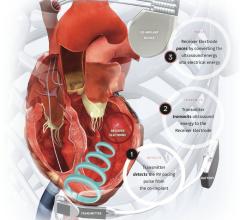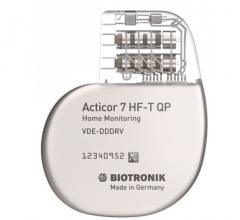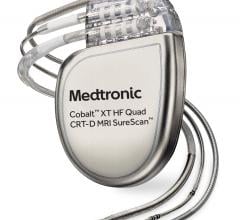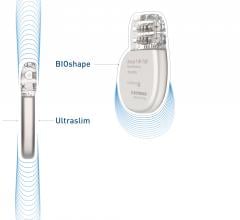

May 15, 2017 – The U.S. Food and Drug Administration (FDA) has granted market clearance Medtronic’s portfolio of quadripolar cardiac resynchronization therapy-pacemakers (CRT-Ps) that improve therapy delivery for patients with heart failure. These devices also allow patients to receive MRI (magnetic resonance imaging) scans in either 1.5 or 3 Tesla (T) machines. The Percepta Quad CRT-P MRI SureScan, Serena Quad CRT-P MRI SureScan and Solara Quad CRT-P MRI SureScan are expected to be available commercially in the United States in early summer 2017.
“These new pacemakers allow clinicians to provide more personalized therapy treatment options,” said Anne B. Curtis, M.D., chair of the Department of Medicine, University at Buffalo, N.Y. “Their ability to automatically adjust pacing to meet the patient’s needs, even those who are among the most difficult to treat, is an example of how advanced implanted heart device technology has become.”
The Percepta Quad CRT-P features the EffectivCRT Diagnostic, which automatically determines the effectiveness of each left ventricular pace, and the EffectivCRT during AF algorithm, which automatically adjusts pacing rates during atrial fibrillation (AF). It also includes VectorExpress 2.0, an automated in-office test that reduces lead programing to two minutes,[1] and reveals clinically actionable information to help physicians select optimal pacing configurations for each patient.
The Percepta Quad and Serena Quad CRT-Ps also feature the Medtronic-exclusive AdaptivCRT algorithm, which reduces a patient’s odds of a 30-day heart failure readmission by 59 percent,[2] and has demonstrated a 46 percent reduction in AF risk compared to echo-optimized biventricular pacing.[3] Multiple point pacing, which can stimulate the left ventricle (lower chamber) at two sites, is also available on both devices, as well as on the company’s Claria MRI Quad CRT-D SureScan and Amplia MRI Quad CRT-D SureScan.
All three CRT-Ps also are compatible with Attain Performa MRI SureScan Quadripolar Leads, which include short bipolar spacing to reduce the occurrence of phrenic nerve stimulation,[4] steroid on all electrodes, and three shapes for varying patient anatomies. They also employ the Medtronic-exclusive PhysioCurve contoured design, which reduces overall skin pressure compared to non-contoured devices,[5] for enhanced patient comfort6 and improved cosmetic appearance of the implant site7. This CRT-P portfolio received CE (Conformité Européenne) mark in February 2017.
For more information: www.medtronic.com
References:
1. Demmer, W. VectorExpress performance results. Medtronic data on file. January 2013.
2. Starling RC, Krum H, Bril S, et al. Impact of a Novel Adaptive Optimization Algorithm on 30-Day Readmissions: Evidence From the Adaptive CRT Trial. JACC Heart Fail. July 2015;3(7):565-572.
3. Martin D, et al. Clinical outcomes with adaptive cardiac resynchronization therapy: Long-term outcomes of the Adaptive CRT Trial. HFSA Annual Scientific Meeting. September 23, 2013.
4. Biffi et al. Effort of bipolar electrode spacing on phrenic nerve stimulation and left ventricular pacing thresholds: An acute canine study. Circulation Arrhythmia and Electrophysiology. 2012.
5. Flo D, et al. IS4/DF4 Device Shape Analysis. Medtronic data on file. January 2013.
6. Ceelen KK, et al. J Biomech. 2008;41:3399-3404.
7. Gold MR, et al. J Am Coll Cardiol. 1996;28;1278-1282.


 May 22, 2023
May 22, 2023 








